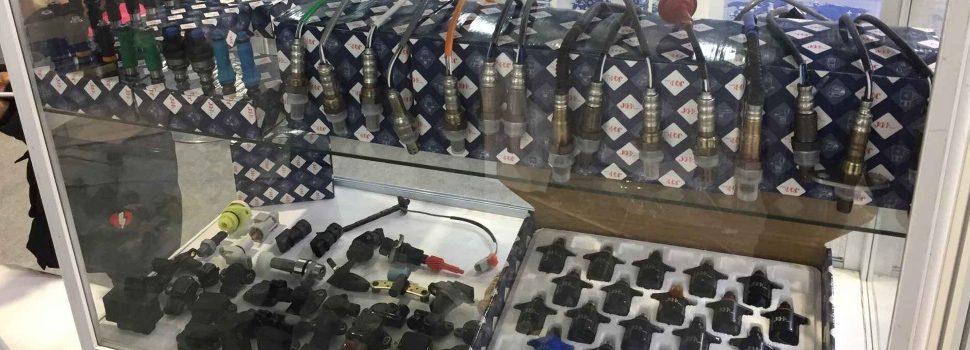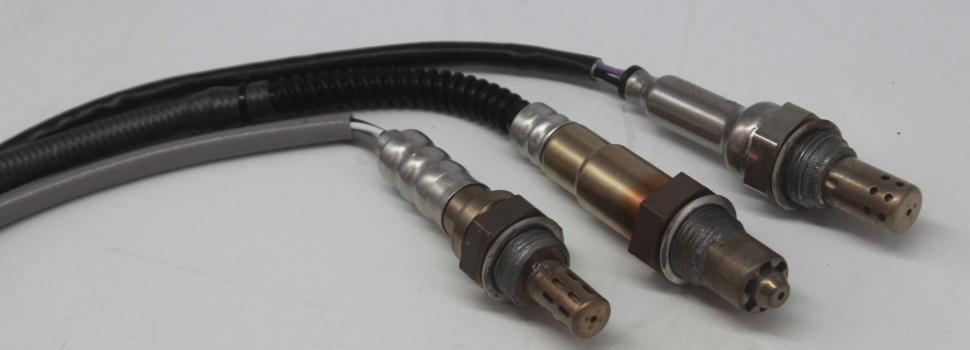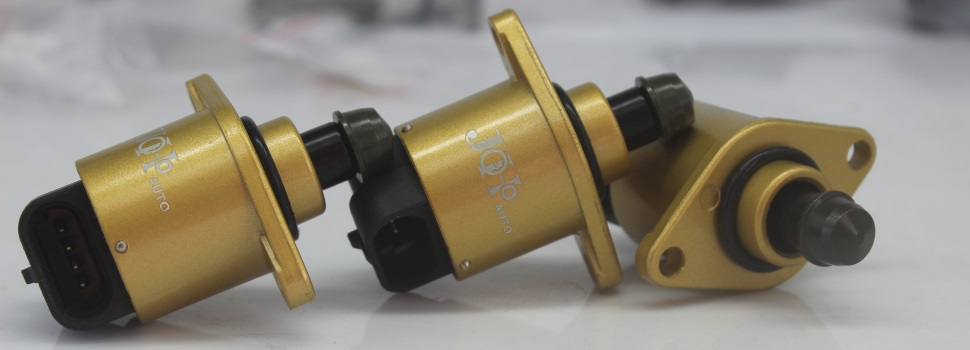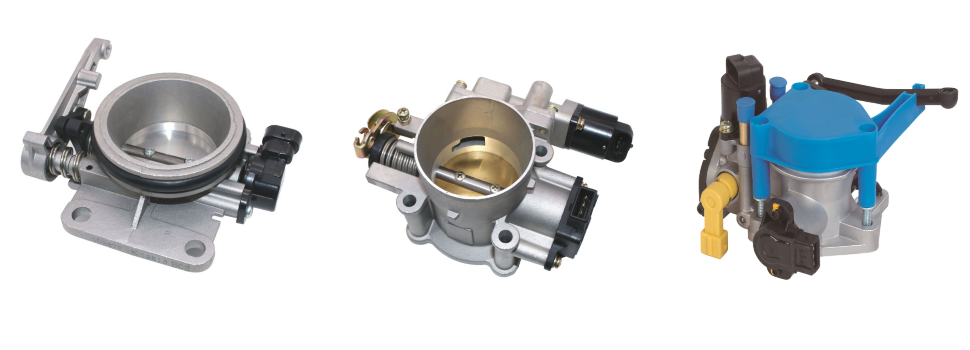Trailers between 751 -2000 kg (1655 - 4400 lb) GTM - braking on both wheels on at least one axle. Note Manufacturers should ensure that optional equipment and original equipment, or for after market fitment, does not invalidate compliance with any ADRs. Refer to text. (For further information, refer to ADR 13/00 Appendix A clause 6.5 and ADR 6/00). Arrangement: At the side. Flashing must be within a range of 60 to 120 flashes per minute. The bumper must provide a force path to the trailers structural members. An efficient brake system must apply the brakes immediately if the trailer becomes detached from the towing vehicle. * May be increased to as close as possible to the front and/or rear respectively if the structure makes it impractical to keep within 300 mm (for example a boat trailer). 50/D40/10; the mark G50 or G50-X or H50 or H50-X; the mark D, followed by the D-Value rating for the coupling; and. Arrangement: At the front. An efficient brake system must apply the brakes immediately if the trailer becomes detached from the towing vehicle. Lamps on a trailer must not show red light to the front or white light to the rear (except reverse lamp). A load must not project more than 150mm beyond the trailer's width or be more than 2.5m overall width, whichever is less. If you find that your trailer is in need of repair or replacement parts, call Austrailers Queensland. The ADRs mean the Australian Design Rules. BRAKES 29 ENGINE/DRIVE LINE/EMISSIONS 32 4. One pair of side repeating indicators may also be fitted approximately halfway along semi trailers if they are over 7.5m long. Trailers exceeding 2.5 tonnes that are still less than 3.5 tonnes must be fitted with two safety chains. a piece of machinery or equipment that is equipped with wheels and designed to be towed behind a road motor vehicle. Complete pig trailer inspection sheet (F3123). Electromagnetic Energy (EME) from telecommunications in Australia: The science behind the safety standard. Example Dog trailer (For further information, refer to ADR 13/00 Appendix A clause 6.6 and ADR 49/00). Note: Front position lamps and front and rear end outline marker lamps are required for wide trailers only. This Standard repeals each vehicle standard with the name Australian Design Rule 38/02 Trailer Brake Systems that is: (a) made under section 7 of the Motor Vehicles Standard Act 1989; and. All wiring must be protected from chafing and have an earth return wire between the towing vehicle and the trailer. Help us improve the content on our website or tell us what is working really well. The brakes on a registered trailer in Queensland must conform to the Queensland trailer regulations. Safety chains must be comply with the following: Trailers under 2.5 tonnes must have at least one safety chain. Victoria: Yes. rear position/registration plate lamp). Many high potential incidents over recent years at Queensland mines and quarries involved brake systems on highway and industrial trucks, and on heavy earthmoving equipment. Option 1 is based on an international standards arrangement (an option may be chosen even if it results in no side-marker lamps having to be fitted to a particular trailer). In width, the outermost surface of the lamp must not be more than 150 mm inboard of the extreme outer edge of the trailer. The number of side retro reflectors that must be fitted depends on the size and specifications of the trailer. All trailer wiring must be insulated at joints. Rear overhang must not exceed the lesser of 3.7 metres or 60% of the distance between the point of articulation (POA) and the line from which the rear overhang is measured. Triangular the apex of triangle must point upwards. ## Also all semi-trailers regardless of size. Refer to text. These are permitted when the GTM is under 2000kg. Safety chains must be comply with the following: Trailers under 2.5 tonnes must have at least one safety chain. the distance from the POA to the rear end must not exceed 12.3 metres. Non-triangular only. There must be two white or amber clearance lamps at the front and two red clearance lamps at the rear. Semi trailers must have a rear bumper no more than 600mm from the ground when unloaded. A trailer having one axle group near the middle of the length of its goods carrying surface. Note It is suggested as a minimum that the Manufacturer should be able to demonstrate that the structure is capable of supporting the designed payload with a safety factor of at least 3 for highway use and a safety factor of 5 for off road use. All lamps on trailers must operate with the corresponding lamps on the towing vehicle. Three types of seven pin connectors are specified in the Standard and their wiring is shown in the below figure. Lamps and wiring may be detachable from trailers such as boat trailers, where they are exposed to conditions such as immersion in water, which might cause short-circuiting or other malfunctions. (No unnecessarily sharp edges), Trailers must be safe and fit for purpose. Changes for light trailer and caravan manufacturers. Electrical installations on a trailer that are intended for connection to a power system other than that of the drawing vehicle must comply with Australian Standard 3001-1981 Electrical Installations in Caravans and Caravan Parks or Australian Standard AS 3001-2001 Electrical InstallationsRelocatable premises (including caravans and tents) and their site installations. Tyres shall not be referred to by name of manufacturer or brand name on the placard. SM1 or SM2 type lamps may optionally be fitted to all other trailers. If you intend to manufacture your own coupling, then you will need to consult ADR 62/01 or ADR 62/02 and conduct physical testing to ensure compliance. (b) in force at the commencement of this Standard. This site is protected by reCAPTCHA and the Google One pair of side repeating indicators may also be fitted approximately halfway along semi trailers if they are over 7.5m long. The length of a trailer, other than a semi-trailer, must not exceed 12.5 metres. Alongside our trailer manufacturing service, we also repair trailers and stock trailer parts. Brakes (air, vacuum or electric) operated from driver's Two rear position lamps or tail lamps must be fitted at the rear of the trailer. Presence: Must be fitted if a trailer is more than 2100 mm wide. These lamps indicate to the rear of the trailer that the driver is applying the service brakes. is equipped with temporary sleeping accommodation only. These lamps indicate the presence, width and height of a trailer when viewed from the front or rear. If the rear retro reflectors are triangular, the apex of the triangle must face upwards. 11. Number: Such that the Arrangement below is met.Arrangement: At the side. Note: Grouped lamps have separate bulbs and lenses (or LED elements) but a common lamp body (e.g. * May be reduced to 400mm where the overall width of the trailer is less than 1300mm. (For further information, refer to ADR 13/00 and ADR 47/00). Note Fire authorities strongly recommend that caravans or trailers equipped with cooking facilities, or living or sleeping accommodation, be fitted with approved fire blankets and smoke detectors. Use tab and cursor keys to move around the page (more information), Aboriginal and Torres Strait Islander peoples. All lamps on trailers must operate with the corresponding lamps on the towing vehicle. Before purchasing a coupling for this size of trailer, you should request from the coupling supplier written confirmation that the coupling complies with ADR 62/01 or ADR 62/02. Arrangement: At the front and the rear. Electrical Connections: Must operate with rear position, end-outline (if fitted), side-marker (if fitted) and rear registration lamps. A trailer having one axle group towards the rear end of the length of its goods carrying surface such that significant load is imposed on the drawing vehicle. Note: the trailer coupling or safety chain may not be used as an earth return, Trailers less than 3.5 tonnes must have electrical connectors between the trailer and the towing vehicle that comply with the AS 2513-1982 or AS 4177.5-2004 Australian Standard (link). On every trailer which is 2.2 metres or more in width and which has a body of the tray type, that portion of the external surface of any rear wheel guard, which is visible to the rear, must be white or silver in colour and clearly visible. Trailers up to 2500 kg ATM are required to have one safety chain. The object of the relevant Queensland regulations . Drawbars must withstand the following forces applied at the centre of the intended coupling without detachment or any distortion or failure, which will affect the safe drawing of the towed trailer: (For further information, refer to ADR 62/01 clause 14). Those braking systems include: Mechanical override brakes use the tow coupling to manually pull a cable connected to the trailers brake drums. Austrailers Queensland is a premium trailer manufacturing company based in Brisbane. The locking must be readily verifiable by visual inspection. Note Seven and twelve pin connectors should be of a robust design to reduce the risk of short circuits developing. This is the simultaneous operation of all the trailer's direction indicator lamps to show that the trailer temporarily presents a special danger to other road users. All indicator lamps must operate by a single control that is independent of all other lamps and must flash in phase all on one side. Semi trailers must have a rear bumper no more than 600mm from the ground when unloaded. @ May be increased to 1500 mm if the structure makes it impractical to keep within 900 mm. Drawbars, Safety Chains, Safety Chain Attachments and Couplings, Trailers & Caravans Equipped with Refrigeration and Air Conditioning Systems, infrastructure.gov.au/vehicles/design/adr_online.aspx, AS 2513-1982 Electrical Connectors for Trailer Vehicles, White. These vehicles may be subject to the provisions of the Ozone Protection and Synthetic Greenhouses Gas Management Act 1989. Caravans must be provided with a fire extinguisher(s) selected and located in accordance with Australian Standards AS1850-1994 Portable Fire ExtinguishersClassification, Rating and Performance Testing or AS 1850 -1997 Portable Fire ExtinguishersClassification, Rating and Performance Testing and AS2444-1995Portable Fire Extinguishers and Fire BlanketsSelection and Location or Australian Standard AS 24442001 Portable fire extinguishers and fire blanketsSelection and location. @ May be increased to 2100 mm if the structure makes it impractical to keep within 1500 mm. For example, the fitting of equipment near a lamp may effect visibility requirements of the lamp. These ECE Regulations are identified in the table below. Length is the longitudinal distance between the Front End and the Rear End of a vehicle. Safety chain attachment points must be located as near as practicable to the tow coupling. In the spirit of reconciliation, RACQ acknowledges the Traditional Custodians of Country throughout Australia and their connections to land, water and community. This includes any mass imposed onto the drawing vehicle when the combination vehicle is resting on a horizontal supporting plane. (For further information, refer to ADR 13/00). Trailer wiring must be supported at intervals less than 600mm along its length. Any advice contained in the document is general advice, not intended as legal advice or professional advice and does not take into account any persons particular circumstances. Alternatively, ball couplings may instead comply with ECE R55/- as Class B coupling heads. MEDIUM TRAILER (TC)A trailer with a GTM exceeding 3.5 tonnes but not exceeding 10 tonnes. Front view of trailer plugs (Type 1 and Type 2 plugs also have a locating notch at the bottom): (For further information, refer to ADR 38/02 clause 5). A general-purpose trailer with a load space, which is bounded by vertical sides. Electronic brakes are most commonly used on caravans and trailers over 750kg and are legally required on all caravans and trailers where the GTM is more than 2000kg. 2 lamps must be fitted on all trailers with a length greater than 6,000mm. All pig trailers with rigid drawbars (with or without breakaway brakesbut excluding converter dollies) and, any other trailer without breakaway brakes, must be fitted with safety chains that are marked in accordance with the relevant Australian Standard and (or cables as applicable) complying with the following: Caution Safety chains, which have the mechanical T grade property, are not suitable for welding. dog trailer means a trailer (including a trailer consisting of a semitrailer and converter dolly) that has (a) 1 axle group or a single axle at the front that is being steered by connection to a towing vehicle by a drawbar; and (b) 1 axle group or a single axle at the rear. The brakes on a registered trailer in Queensland must conform to the Queensland trailer regulations. Note: Trailers exceeding 3.5 tonnes should request written verification that the coupling complies with the regulations mentioned above. Trailers with an ATM of greater than 3,500kg must have two safety chains made from T grade chain that meets the requirements of AS 2321 and have a break load limit exceeding the trailer's ATM. Others demand that all boat trailers . at least 120% of the load on that axle with the trailer at its ATM; and. 787 0 obj <>stream The height of any trailer, except for a livestock trailer (See ADRs for definition) must not exceed 4.3 metres in height. Trailers that do not exceed 3.5 tonnes ATM must have electrical connectors between the trailer and towing vehicle that comply with Australian Standard AS 2513-1982 Electrical Connectors for Trailer Vehicles or Australian Standard AS 4177.5-2004 Caravan and light trailer components, Part 5: Electrical connectors. See Figure 1. Trailers for this type of operation should be designed accordingly. Braking 16. This category includes a box trailer fitted with a canopy but which is not equipped as a caravan, e.g. A trailer must meet the dimensional limits in order to take advantage of the arrangements under this bulletin. If there is no structure at the front or rear to attach lamps, they may be fitted on each side instead. Drawbars must be attached securely to the trailer. (For further information, refer to ADR 13/00 Appendix A clause 6.8 and ADR 74/00). It is important not to overload trailers fitted with such leaf springs. This may be affixed to or incorporated in to the vehicle plate referred to in Section 3. No light is to be directed rearwards. CRNs can be checked by entering the number given by the component manufacturer into the approval number field on the Vehicle / RVD search page or through an internationally based ECE approval (see below); or by having the lamps and reflectors tested to the ADR requirements and obtaining from the laboratory conducting the tests, a test report including the conclusion that the item complies with the ADR applicable to its intended use when fitted according to the instructions supplied with the report; and in either case, fitting the lamps and reflectors according to the instructions provided, making sure that no part of the trailer or its equipment obstructs the lamp output. All trailers must have the brakes applied from the driver's seat. Wiring must be located where it will not be in contact with moving parts or overheat. One front position or side lamp must be fitted if a trailer exceeds 1.6m in width and 4m in length. Some have resulted in serious injury, or even death, and contributing factors included: End outline markers or clearance lamps must be fitted if the trailer is more than 2.1 m wide. Wiring must be located where it will not be in contact with moving parts or overheat. For a semi-trailer, the distance from the Point Of Articulation (POA) to the line from which the rear overhang is measured must not exceed 9.5 metres; and. Trailers exceeding 2.5 tonnes that are still less than 3.5 tonnes must be fitted with two safety chains. Two common coupling types are outlined below: Ball couplings used on trailers with an ATM that does not exceed 3.5 tonnes must comply with Australian Standard AS 4177.3-2004 Caravan and light trailer towing components Part 3: Coupling body for ball couplings. Towbars : A properly designed and fitted towbar is essential for safe towing. 0 Refer to ADR 42 for more information on the fitment of lavatory closets, urinals, basins and sinks. H4 " Trailer wiring must be supported at intervals less than 600mm along its length. Arrangement: At the rear. Means the Motor Vehicle Standards Act 1989. Twelve pin connectors are also specified in the Standard. For trailers 2100 mm wide or less, may be combined with 2 side-marker lamps that have been fitted, this being in accordance with Option 1 or Option 2 (see Section 13.8). Presence: SM1 type lamps must be fitted if a trailer is more than 6000 mm long. If there is a service brake fitted on the trailer, it must also operate with the brake lamps. Visibility of Tray 19. A front position side lamp must also be fitted if trailer width exceeds 1.8m. Trailers with a GTM not exceeding 3.5 tonnes must have a tyre placard made of a durable material affixed to it in a prominent position. All wheels of a trailer must be fitted with wheel guards that are designed to protect other road users against thrown-up stones, mud, ice, snow and water and to help prevent people contacting the moving wheels. There must be two white or amber clearance lamps at the front and two red clearance lamps at the rear. Trailers that do not exceed 3.5 tonnes ATM must have a quick release coupling which is designed to be engaged and disengaged without the use of tools. Rear overhang must not exceed the lesser of 3.7 metres or 60% of the wheelbase. What is radiofrequency EME (RF EME) and how do we use it to communicate? (For further information, refer to ADR 13/00 Appendix A clause 6.10 and ADR 49/00). https://infrastructure.gov.au/roads/vehicle_regulation/bulletin/vsb1/vsb_01_b.aspx, https://infrastructure.gov.au/roads/vehicle_regulation/bulletin/vsb1/vsb_01_b.aspx, https://www.tmr.qld.gov.au/safety/vehicle-standards-and-modifications/loads-and-towing/safe-towing.aspx, https://www.tmr.qld.gov.au/Safety/Vehicle-standards-and-modifications/Vehicle-standards.aspx. the mark U, followed by the permissible static vertical load in kg. Trailers of any kind must not be designed or used for the carriage of passengers. Vertical tension and compression for rigid drawbar trailer (N), a vehicle without motive power designed for attachment to a road motor vehicle; or. the maximum rating for the coupling body in one of the following, as applicable. (For further information, refer to ADR 13/00 Appendix A clause 8.7 and ADR 47/00). Triangular or non-triangular. The type of braking system required is determined by a caravan's weight. A trailer permanently equipped with a folding and stowable roof (such as a camper trailer) is a caravan. End outline markers or clearance lamps must be fitted if the trailer is more than 2.1 m wide. All trailers with rigid draw bars and any other trailer without breakaway brakes installed must be fitted with safety chains. All brakes must be operable from the driver's seat of the towing vehicle, excluding over-run brakes. Electrical Connections: Must operate with front position (if fitted), rear position, side-marker (if fitted) and rear registration lamps. This ag must be at least 300 mm square and clearly visible. Number: 2 to the front (white or amber) and 2 to the rear (red). These high forces may exceed the design limits of the towbar and or its mountings. There is also provision for alternative couplings, with marking specified in Clause 12.4 of ADR 62/01 and ADR 62/02.





